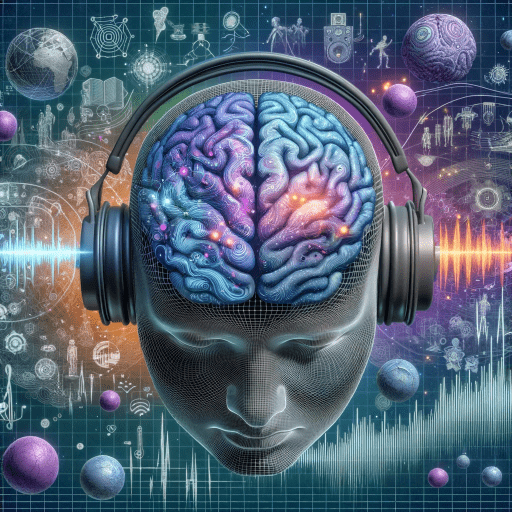Introduction
The immersive potential of multimedia content—spanning virtual reality (VR), augmented reality (AR), gaming, and cinema—is significantly amplified by the integration of 3D audio technology. Also known as spatial audio, this innovative sound processing method mimics the natural way humans perceive sound in the environment, creating an auditory experience that is as real as the visual stimuli it accompanies. This blog post explores the transformative impact of 3D audio on multimedia, underlining its importance through various lenses including spatial awareness, emotional engagement, accessibility, and technical solutions.Enhancing Spatial Awareness and Immersion
Spatial audio is a game-changer in how we experience multimedia, offering an auditory experience that mimics real-world sound perception. It allows sounds to be perceived from specific locations in a three-dimensional space. This technology is especially crucial in VR and AR, where it contributes significantly to the sense of presence and spatial orientation within a digital environment. By allowing listeners to perceive sounds from specific locations in the 3D space, spatial audio makes virtual worlds more intuitive and lifelike. By enabling users to identify the direction and distance of sounds, spatial audio makes virtual environments more intuitive and lifelike, thus enhancing user navigation and interaction within these spaces. A discussion on the importance of sound in virtual reality highlights how well-produced audio can elevate various applications, including entertainment, sports, and education, by providing narrative support, realism, and emotional conveyance in immersive experiences is presented in Sound Object – The importance of sound in virtual reality. And here is the key takeaway:“The importance of audio in VR, AR and XR is still very much understated. Sound is not an expendable element but rather contributes to at least 50% of the experience. The better the audio is produced, the more immersive the experience will be, making the audience more impressed and the client more willing to interact with the company.”Reference for further exploration:
- Lokki, T., & Gröhn, M. (2005). Navigation with auditory cues in a virtual environment. IEEE MultiMedia, 12, 80-86. https://doi.org/10.1109/MMUL.2005.33. Short summary and takeaways: 3D sound can help navigate immersive virtual environments, with the best performance achieved in audiovisual navigation where auditory cues indicate approximate direction and visual cues help in the final approach.
- Vazquez-Alvarez, Y., Oakley, I., & Brewster, S. (2012). Auditory display design for exploration in mobile audio-augmented reality. Personal and Ubiquitous Computing, 16, 987-999. https://doi.org/10.1007/s00779-011-0459-0. (Accessed here.
Short summary and takeaways: Spatial audio increased the level of immersion in a mobile audio-augmented reality environment, encouraging a more exploratory and playful response.
Emotional Engagement and Storytelling
The role of sound in evoking emotions and driving narratives cannot be overstated. 3D audio leverages this by delivering soundscapes that envelop the user, creating a more engaging and emotionally charged experience. Whether it’s the subtle rustling of leaves in a quiet forest or the intense explosions in an action-packed scene, spatial audio enriches multimedia content, making stories more compelling and experiences more immersive. Reference for further exploration:- Grimshaw, M., & Schott, G. (2007). Situating Gaming as a Sonic Experience: The Acoustic Ecology of First-Person Shooters. In Games Studies. Accessed here Summary and takeaways: The article emphasizes the crucial role of sound in enhancing immersion and gameplay in first-person shooters (FPS) through the concept of “acoustic ecology”. It highlights that sound significantly influences player spatial awareness and decision-making, demonstrating sound is not just additive but central to the gaming experience. The main finding underscores how sophisticated sound design in FPS games contributes to creating deeply immersive and interactive environments, thereby elevating the overall quality of the gaming experience.
- Wycisk, Y., Sander, K., Kopiez, R., Platz, F., Bergner, J., Preihs, S., & Peissig, J. (2021). Wrapped Into Sound: Development of the Immersive Audio Quality Inventory (IAQI). https://doi.org/10.21203/rs.3.rs-1138663/v1. Summary and takeaways: The Immersive Audio Quality Inventory (IAQI) effectively measures immersive listening experiences in various audio formats, providing a valid tool for evaluating the emotional impact of 3D-audio.

Accessibility Through Spatial Audio
Spatial audio not only enhances the multimedia experience for the average user but also opens up new possibilities for individuals with visual impairments. By providing detailed audio cues about the surrounding environment, spatial audio enables visually impaired users to navigate and interact within digital spaces more effectively. This not only broadens the potential audience for multimedia content but also marks a significant step towards inclusive design in digital entertainment. References for additional reading:- Guillen, G., Jylhä, H., & Hassan, L. (2021). The Role Sound Plays in Games:: A Thematic Literature Study on Immersion, Inclusivity and Accessibility in Game Sound Research. Proceedings of the 24th International Academic Mindtrek Conference. ttps://doi.org/10.1145/3464327.3464365. Short Summary and takeaways: The article conducts a comprehensive review of existing literature to explore how sound influences player immersion, promotes inclusivity, and enhances accessibility in video games. It identifies key themes and gaps in the research, highlighting sound’s pivotal role in creating engaging gaming environments and supporting diverse player needs. The study calls for further research into sound’s potential to make games more inclusive and accessible, underscoring its importance in the development of immersive gaming experiences.
- How spatial audio holds the key to inclusive immersion. (Accessed here)
Technical Considerations and Solutions
The integration of high-quality 3D audio into multimedia projects requires overcoming certain technical challenges, necessitating specialized knowledge and tools. Plugins like atmoky trueSpatial for Unity have emerged to address these challenges, offering developers advanced tools for embedding immersive audio into their Unity-based projects. The same goes for atmoky Engage with goal of social communication and immersive experiences for the 3D web. Such solutions simplify the process of creating and integrating spatial audio, thereby making immersive experiences more accessible to creators. Reference for technical insights:- “Overview – atmoky trueSpatial.” developer.atmoky.com/true-spatial/docs.
- “Overview – atmoky Engage.” https://atmoky.com/products/engage/